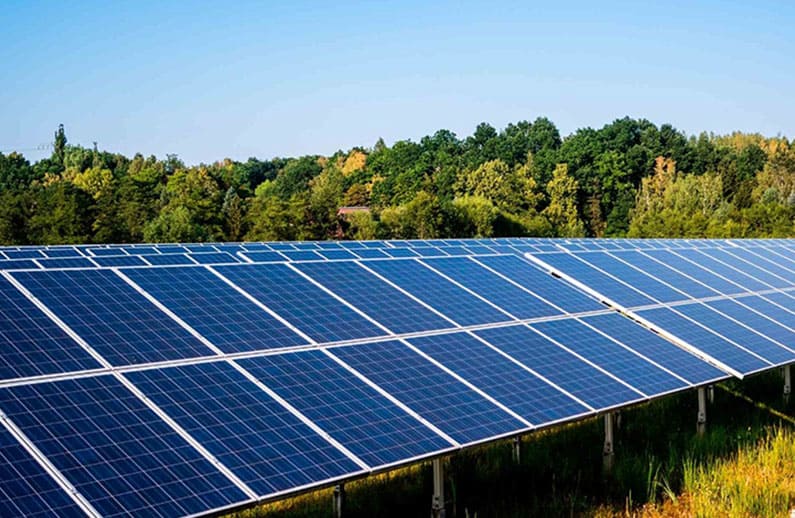Sind mehr Solarmodule oder mehr Batterien besser?
Aug 04, 2025
Bei der Planung einer Solaranlage stellt sich häufig die Frage: Soll ich in mehr Solarmodule oder mehr Batterien investieren? Die Antwort hängt von Ihren Energienutzungsgewohnheiten, den lokalen Sonneneinstrahlungsbedingungen, den Systemzielen (z. B. netzunabhängig oder netzgekoppelt) und Ihrem Budget ab. Beide Komponenten sind für die Effizienz der Solarenergie unerlässlich. Das Verständnis ihrer Rollen hilft jedoch dabei, die richtige Balance zu finden.Welche Rolle spielen Solarmodule?Solarmodule sind die wichtigsten Energieerzeuger in Ihrem System. Geräte wie ein monokristallines Solarmodul oder ein bifaziales 580-W-Solarmodul wandeln Sonnenlicht tagsüber in Gleichstrom um. Diese Module unterscheiden sich in Effizienz, Leistung und Kosten.Monokristalline Solarmodule gehören zu den effizientesten verfügbaren, mit Konvertierungsraten von 19 %–23 %Sie funktionieren gut bei hohen Temperaturen und schlechten Lichtverhältnissen und sind daher die ideale Wahl für Wohnhausdächer mit begrenztem Platzangebot. Auf der anderen Seite bieten bifaziale 580-W-Solarmodule den Vorteil einer doppelten Oberfläche: Sie fangen direktes Sonnenlicht auf der Vorderseite und reflektiertes Licht auf der Rückseite ein und erzeugen bis zu 15 % mehr Energie im Vergleich zu herkömmlichen monofazialen Paneelen unter idealen Bedingungen.Beispiel für die Leistung eines Solarmoduls (Bei angenommenen 5 Sonnenstunden pro Tag)Paneltyp NennleistungTägliche Energieabgabe (kWh)Benötigte Fläche (m²)Monokristallines Panel400 W2.0 ~1,9580 W bifaziales Panel 580 W 2,9–3,3~2,3 Was machen Solarbatterien?Solarmodule funktionieren nur, wenn die Sonne scheint. Nachts oder bei Stromausfällen wird Ihr Haus mit gespeichertem Strom versorgt. Hier kommen Batterien zum Einsatz – wie eine Lithium-Solarbatterie-Komm herein.Im Gegensatz zu älteren Blei-Säure-Batterien laden Lithiumbatterien schneller, halten länger (über 5.000 Zyklen) und bieten eine höhere nutzbare Kapazität. Sie speichern die tagsüber erzeugte überschüssige Energie für die spätere Nutzung und bieten so Zuverlässigkeit, Notstromversorgung und in Kombination mit intelligenten Wechselrichtern oft auch Einsparungen bei den Stromkosten.Eine standardmäßige 10-kWh-Lithium-Solarbatterie kann Folgendes mit Strom versorgen:Ein Kühlschrank für 20–24 StundenWLAN, Laptops und Licht für bis zu 2 TageWichtige Stromkreise bei mehrstündigen StromausfällenSie erzeugen jedoch keine Energie, sondern speichern sie nur. Wenn Sie mit Ihren Paneelen also nicht genug erzeugen, helfen Ihnen zusätzliche Batterien nicht viel. Wann sollten weitere Solarmodule hinzugefügt werden?Mehr Solarmodule sind in der Regel die bessere Investition, wenn:Ihr Energiebedarf ist tagsüber hoch (z. B. durch Heimarbeit, elektrische Warmwasserbereitung, Nutzung der Heizungs-, Lüftungs- und Klimatechnik).Sie möchten Ihre Nebenkosten so weit wie möglich senkenIhre Batterien sind oft schwach, was darauf hindeutet, dass sie tagsüber nicht ausreichend geladen werdenSie planen, den Energieverbrauch in Zukunft zu erhöhen (Laden von Elektrofahrzeugen, Installation einer Wärmepumpe)Zum Beispiel das Hinzufügen einiger weiterer 580 W bifaziale Solarmodule können Sie 2–3 zusätzliche kWh pro Tag erzeugen. Über einen Monat gesehen ist das eine zusätzliche 60–90 kWh, wodurch möglicherweise Ihr gesamter Beleuchtungs- und Kühlbedarf gedeckt werden kann, ohne dass Sie auf gespeicherte Batterieleistung zurückgreifen müssen. Wann sollten weitere Batterien hinzugefügt werden?Mehr Batteriespeicher sind die klügere Entscheidung, wenn:Sie erleben häufige Stromausfälle oder NetzinstabilitätSie streben eine vollständige Energieunabhängigkeit an (Leben ohne Stromnetz)Ihre Solarmodule erzeugen bereits mehr Energie, als Sie tagsüber verbrauchen könnenIn Ihrer Region gelten zeitabhängige Abrechnungs- oder Leistungsgebühren Durch Hinzufügen einer zusätzlichen Lithium-Solarbatterie können Sie mehr Energie vom Tages- auf den Abendverbrauch verlagern und so möglicherweise mehr als 30 % Ihrer Stromrechnung einsparen, wenn der Strompreis aus dem Netz nachts höher ist.Komponente Durchschnittliche Preisspanne (USD) Lebensdauer Hauptvorteil Monokristallines Panel180–250 USD pro Panel 25–30 Jahre Hohe Effizienz, zuverlässige Leistung580 W bifaziales Panel 250–320 USD pro Panel 30+ Jahre Höhere Leistung, Dual-Surface-VerstärkungLithium-Solarbatterie5.000–8.000 USD (10 kWh)10–15 JahreHohe Speicherkapazität, schnelles Laden/Entladen Die Amortisationszeit für Solarmodule beträgt in der Regel kürzer, da sie Ihre Abhängigkeit vom Netzstrom sofort reduzieren. Batterien bieten langfristigen Nutzen durch Backup-Sicherheit und Zeitverschiebung, sind aber mit höheren Anschaffungskosten verbunden. So finden Sie die richtige BalanceEs gibt keine allgemeingültige Antwort, aber hier ist ein einfacher Rahmen:Beginnen Sie mit Paneelen, um bei Tageslicht möglichst viel Solarenergie zu erzeugen.Fügen Sie Batterien hinzu, wenn Sie ständig überschüssige Energie erzeugen und diese für Zeiten außerhalb der Spitzenlast oder bei Stromausfällen speichern möchten.Überwachen Sie die Echtzeitdaten Ihres Systems ein bis zwei Monate lang, bevor Sie es erweitern. Wenn Ihre Batterie mittags immer voll ist, könnten Sie von mehr Batterien profitieren. Ist sie morgens leer, benötigen Sie wahrscheinlich mehr Panelkapazität. Das könnte Sie auch interessieren Hybrid-Wechselrichtersysteme, die eine modulare Erweiterung sowohl der Paneele als auch der Batterien ermöglichen, wenn sich Ihr Energiebedarf ändert.


 NETZWERK UNTERSTÜTZT
NETZWERK UNTERSTÜTZT